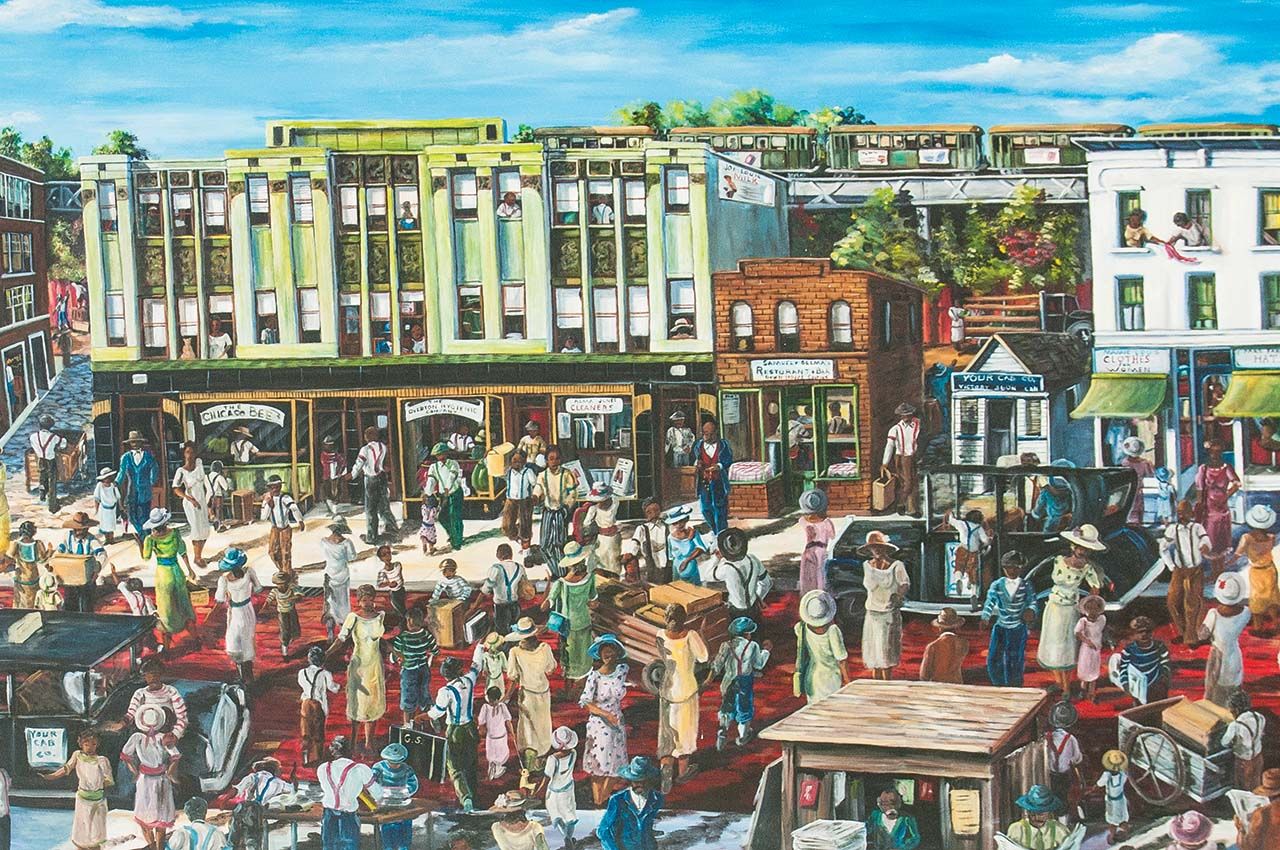Congress Passes Bill Designating Bronzeville Neighborhood a National Heritage Area

President Joe Biden has signed a bill that preserves a large section of the historic Chicago neighborhood of Bronzeville as a national heritage area (NHA), providing up to $10 million in federal funding over a 15-year period for conservation, management, and development. The NHA will focus on the cultural legacy of Bronzeville and of the Great Migration’s legacy of Black Americans who moved to the city’s South Side during the early twentieth century.
The Bronzeville-Black Metropolis National Heritage Area Act was introduced by Bobby Rush, who represented part of the South Side neighborhood for almost two decades before retiring from the United States Congress in 2022. Provisions from Rush’s bill were included in the National Heritage Area Act, which in late 2022 passed by a 326–95 margin in the House and unanimously in the Senate, where it was supported by Senators Dick Durbin (D-Illinois) and Tammy Duckworth (D-Illinois). Biden signed the bill on January 5, 2023.
The NHA stretches from 18th Street to the north, 71st Street to the south, Lake Michigan to the east, and Canal Street to the west. A portion of it is already recognized by the City of Chicago as a historic district, and dozens of buildings are listed on the National Register of Historic Places. Within these boundaries are landmarks such as Pilgrim Baptist Church, the birthplace of gospel music; Supreme Life Insurance, the first northern Black-owned insurance company; the homes of blues and jazz legends Muddy Waters and Louis Armstrong; and the Wabash YMCA, where the first Black History Month was celebrated.
Rush worked with the local Bronzeville-Black Metropolis National Heritage Area Commission on crafting the legislation, which names the commission as the local coordinating authority for the NHA.
Before the bill’s passage, Bernard Turner, executive director of the commission, said the designation would be a formal recognition of the history and cultural significance of the area. The rise of Black culture and the arts in particular have a strong connection to Bronzeville, which was known as the city’s Black Metropolis and became known as a city within a city.
“A lot of people talk about the Harlem Renaissance. We had the same thing here in Chicago,” Turner said. “When you think of dance, music, arts, and literature, all of that, even some of the same people (in Chicago) were part of that renaissance.”
Local activists have worked on pursuing a heritage area for years, and in 2013, the commission partnered with the Chicago Metropolitan Agency for Planning on a study to prove the feasibility of the NHA, assistant vice president for community affairs at Illinois Institute of Technology. “This designation not only preserves the rich cultural history of the area that Illinois Tech calls home, but also provides much needed funding to its conservation and development. We look forward to seeing the positive impact this will have in our community and beyond.”




